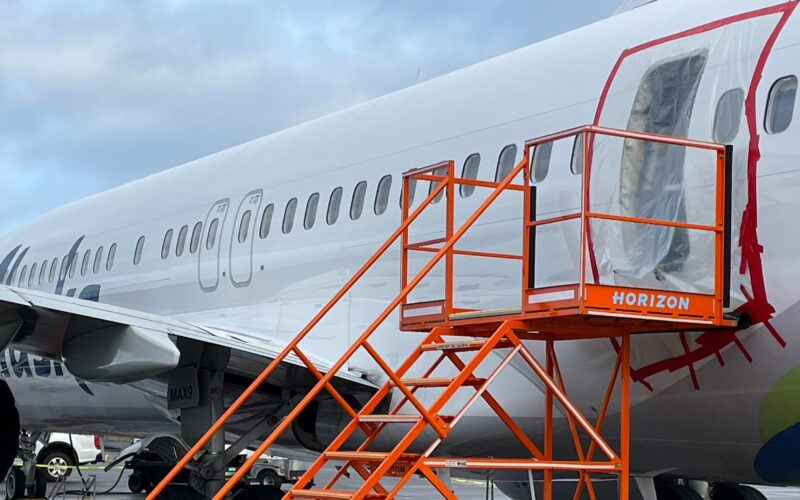Alaska Airlines, a United States-based carrier, has initiated preliminary inspections for quality control on its Boeing 737-9 MAX fleet following a recent incident involving a plug door blowout, resulting in mid-flight depressurization.
On January 13, 2024, Alaska Airlines announced the commencement of its own quality control audit for up to 20 of its Boeing 737-9 MAX aircraft, aligning with the requirements set by the Federal Aviation Administration (FAA).
“The Federal Aviation Administration is demanding additional data from Boeing before approving the manufacturer’s proposed inspection and maintenance instructions, which will be utilized for final inspections on all 737-9 MAX planes to safely return them to service,” the airline wrote in a public statement.
Alaska Airlines also expressed appreciation for the FAA’s recent steps in auditing and reviewing safety processes not only for the 737-9 MAX aircraft but also across Boeing and Spirit AeroSystems, Boeing’s fuselage supplier.
In addition to the US regulator’s review and oversight, Alaska Airlines said it is actively enhancing its “own layers of quality control” for the production of the 737-9 MAX jets. This includes a comprehensive review of Boeing’s production quality and control systems, as well as oversight of the manufacturer’s production vendors.
“Starting this week, we will also enhance our own quality oversight of Alaska aircraft on the Boeing production line, expanding our team with additional experienced professionals to validate work and quality on the Boeing 737 production line,” the carrier further stated.
The recent FAA-mandated grounding significantly impacted the operations of Alaska Airlines, resulting in the cancellation of at least 150 flights and disrupting the travel plans of thousands of passengers, as reported by Aerotime. The operator earlier said that before the resumption of operations for any MAX aircraft, the FAA must release an Alternate Methods of Compliance (AMOC) outlining the “approval details for operators’ inspection processes to ensure compliance with their Airworthiness Directive (AD).”
Alaska Airlines also emphasized the necessity of providing its maintenance teams with “comprehensive inspection instructions and processes” developed internally, enabling staff to perform thorough inspections in accordance with the FAA’s specifications.
Following a plug door blowout incident at 16,000 feet in the air, the FAA grounded a total of 171 Boeing 737 MAX 9s, including 65 Alaska Airlines jets. The incident occurred on January 5, 2024, during flight AS1282 between Portland International Airport (PDX) and Ontario International Airport (ONT) in California. The Alaska Airlines aircraft, registered as N704AL, carrying 171 passengers and six crew members onboard, experienced an uncontrolled decompression when a panel installed to replace an optional emergency exit door broke away from the plane.



